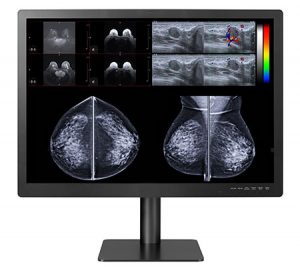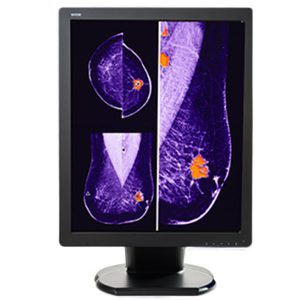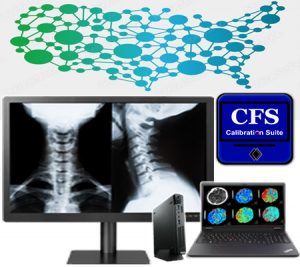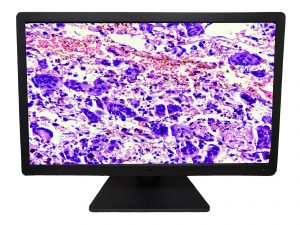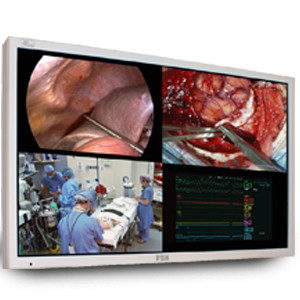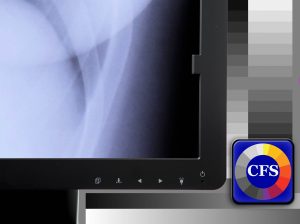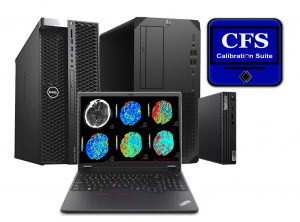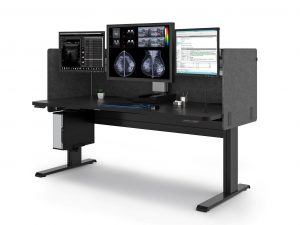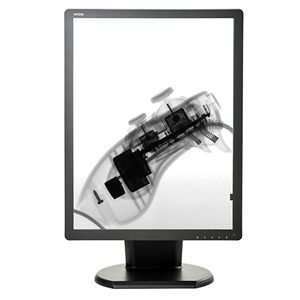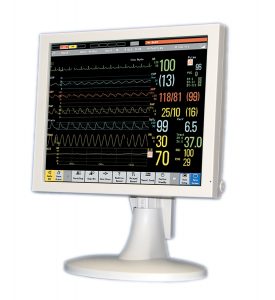The occupational hazards of radiology are well known: exposure to radiation, splashes with contrast media, bodily fluid exposure, and stress to name a few. Another less recognized danger for those in the profession is the sedentary nature of the work.
It’s estimated that diagnostic radiologists spend more than 8 hours a day sitting at their computers and workstations. Understanding how the sedentary nature in radiology affects a radiologist’s health and the quality of their work is important for preventing health issues and optimizing patient care. Knowing how to reduce the risks related to this workplace hazard is also important so those working in the profession know how to protect themselves.
What Is a Sedentary Lifestyle or Career?
The U.S. Department of Labor defines sedentary work as “exerting up to 10 pounds of force occasionally or a negligible amount of force frequently to lift, carry, push, pull, or otherwise move objects, including the human body. Sedentary work involves sitting most of the time, but may involve walking or standing for brief periods of time. Jobs may be defined as Sedentary when walking and standing are required only occasionally and all other Sedentary criteria are met.” By this definition, most of the work performed in radiology meets this criteria.
Researchers confirm this stating most image interpretation done by diagnostic radiologists is sedentary with radiologists sitting at a computer workstation to perform this work.
How Being Sedentary Affects Quality of Work and Radiologists’ Health
 The sedentary nature in radiology contributes to stress which has been shown to decrease job satisfaction and lead to poor mental health outcomes. However, it’s also thought that stress associated with sedentary radiology work may contribute to poor workstation ergonomics. This may lead to an array of work-related musculoskeletal injuries that 30%-60% of radiologists report such as eyestrain, neck & back pain, carpal tunnel syndrome, and headaches.
The sedentary nature in radiology contributes to stress which has been shown to decrease job satisfaction and lead to poor mental health outcomes. However, it’s also thought that stress associated with sedentary radiology work may contribute to poor workstation ergonomics. This may lead to an array of work-related musculoskeletal injuries that 30%-60% of radiologists report such as eyestrain, neck & back pain, carpal tunnel syndrome, and headaches.
And experts like Rebecca L. Seidel, MD agree that correct ergonomics are essential for the productivity, performance, and well-being of radiologists.
The risks of a primarily sedentary lifestyle for the general population are well-known and include health problems that carry high risks of morbidity and mortality such as:
- •Hypertension
- •Obesity
- •Diabetes
Other diseases attributable to a sedentary lifestyle include cardiovascular disease and certain types of cancer with even higher mortality rates resulting from these diseases as sedentary behavior increases.
In fact, researchers point out that being sedentary contributes to all causes of mortality—not just those listed above. And this increased mortality risk exists even in those who engage in physical exercise regularly outside of their sedentary jobs. Excessive time spent sitting or in minimal movement is believed to contribute to a slower metabolism and many of the negative effects mentioned above.
How Radiologists Can Improve Health at Work
While a significant amount of a diagnostic radiologist’s job is sedentary, there are things that can be done to mitigate the health risks of sitting for prolonged periods of time. Experts studying the sedentary behavior in radiology suggest radiologists can improve their health by understanding and applying the concept of NEAT to their work.
The acronym NEAT refers to “nonexercise activity thermogenesis”. It includes activities of daily living that require energy for the body to perform such as walking, standing, sitting, and fidgeting. NEAT excludes sleeping, eating, and sports or fitness activities.
The concept of NEAT was studied by Levine et al. to determine whether or not fidgeting-like activities could counteract weight gain in sedentary adults who were overfed. Surprisingly, they discovered even low energy expenditure fidgeting activities were effective in maintaining metabolic rate and deterring weight gain in study subjects.
Fidgeting-like activities that radiologists could incorporate into their work that have been shown to increase energy expenditure significantly and reduce the negative effects of prolonged motionless sitting include using a mouse at the computer, typing, and tapping one’s foot.
In addition to making these relatively small changes, researchers suggest there are other things radiologists can do to increase NEAT and help ward off chronic health problems related to being sedentary.
Some of these things include:
1. Drink more water
Drinking enough water has a number of health benefits. Water is needed for several important bodily functions. It also helps suppress appetite and control weight gain. Eating more foods with a higher water content can help reduce caloric intake and result in increased satiety after eating. To incorporate more activity with higher water consumption, use a small water bottle so you’re required to get up and refill it often.
2. Consider standing to perform some work
Researchers found that standing motionless or standing and fidgeting also increases NEAT significantly compared to sitting motionless or fidgeting while seated. Most PACS workstations can be elevated which allows some reading and dictating to be done while standing. It’s also important to add some of the fidgeting-like activities mentioned earlier while standing since this significantly increases energy expenditure compared to standing motionless. However, it’s also important to keep in mind that periods of prolonged standing may lead to venous stasis and back pain so it’s best to keep moving and avoid any one position for too long.
3. Walk more throughout the day
The benefits of walking are well-known and include increased calorie expenditure. Consider communicating about a patient with a colleague in your facility face-to-face rather than via phone or email. In addition to ensuring better communication, you’ll be taking care of your own health. Taking short breaks from radiological workstations has also been shown to help one stay focused, reduce eyestrain, and calm the mind.
4. Perform some simple exercises at your workstation
Incorporate some simple exercises throughout the day at your workstation such as neck rolls, side stretches, seated spinal twists, and leg lifts. These basic exercises have been shown to reduce fatigue and decreases in metabolism while increasing NEAT expenditure and only take a couple minutes to complete.
5. Include a variety of calorie-burning activities in your workday
Although the following activities haven’t been studied specifically with radiologists or in relation to radiology reading rooms, researchers suggest radiologists consider incorporating some of these activities into their workday to keep metabolism elevated and help reduce the likelihood of chronic diseases associated with being sedentary.
- •Increase fiber intake which is associated with increased and prolonged satiety and reduces the incidence of obesity, hypertension, diabetes, coronary artery disease, and stroke.
- •Be mindful of your caloric intake versus energy expenditure.
- •Avoid eating 2 hours before bed when you’ll be more sedentary.
- •Try to get 7-9 hours of restful, uninterrupted sleep at night since 4 hours of sleep or less over a prolonged period of time is associated with reduced metabolism.
- •Set the timer on your phone or smart watch as a reminder to get up and stretch or move for the last 5 minutes of each hour.
- •Consider tracking your activity level such as your daily steps as well as your food and water intake on a smart device such as your phone or smart watch. Make small improvements each day.
6. Explore radiology room fitness workstations
Treadmills and elliptical machines are no longer equipment found only in fitness facilities. The benefits of incorporating this kind of equipment at standing workstations include an energy expenditure 200% greater than standing at rest. These machines are designed to be quiet enough for use in reading rooms and work well for home offices too. While cost and having adequate space to accommodate equipment may be a concern, installing even a single treadmill workstation that staff can rotate through may help reduce time sitting and provide staff with healthier ways to work.
Why Work With Double Black Imaging to Build a Healthier Workstation?
Double Black Imaging is proud to be known for its exceptional and unparalleled customer service in addition to our high standards that exceed other industry providers. We use advanced technology combined with the latest research to design innovative and reliable medical displays, ergonomic workstations, and software solutions to help make imaging more efficient and reduce healthcare costs.
At Double Black Imaging, our specialists will work with you to create the perfect workstation that takes into consideration your health as well as cost and space constraints. Contact us today at (844) 879-2247.
Source List:
https://www.ajronline.org/doi/10.2214/AJR.15.15496
https://www.dol.gov/sites/dolgov/files/owcp/dfec/regs/compliance/owcp-5c.pdf
https://www.radiologytoday.net/archive/rt0620p14.shtml
https://www.unm.edu/~lkravitz/Sports%20Physiology/SedentaryLifestyle.pdf
https://pubs.rsna.org/doi/full/10.1148/rg.2018180030
